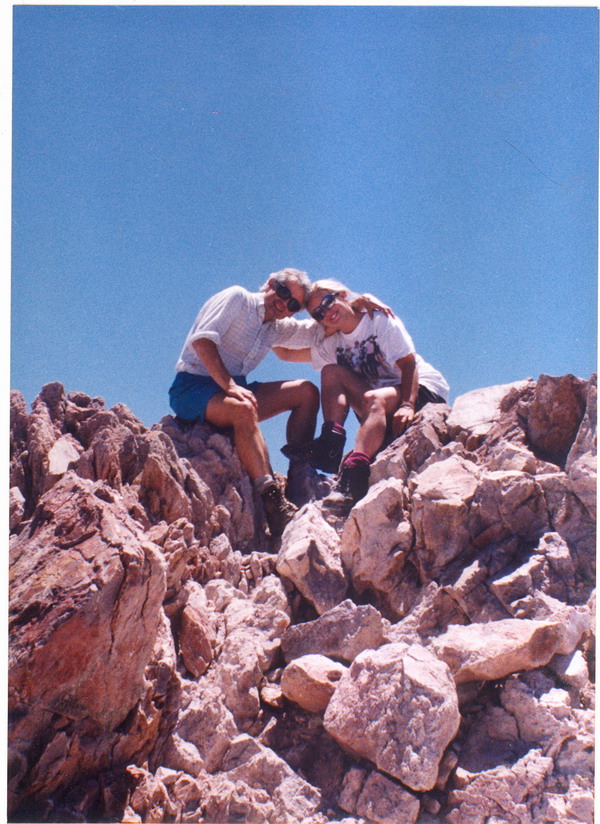 |
|
|
Lee and Molly Juillerat on Shasta's summit
|
It was the summer of 1972 and we were rumbling along in Paul Shipman’s pickup truck down Highway 97 from Klamath Falls, Oregon, watching as Mount Shasta’s towering, snow-draped 14,162-foot peak periodically came into view. Paul chatted about the mountain and his two previous climbs. Intrigued I asked, “Paul, why do you climb Shasta?” He chuckled to himself before answering, “I’m not sure if there’s life after death, and, if there is, which place I’m heading. I figure being on top of Shasta is the closest I’ll ever get to heaven.”
In the years since I’ve experienced some heavenly, and hellish, climbs up Shasta. Climbing Shasta is a ritual for me, and others. Over the past 30 years I’ve reached the top almost always once a year, sometimes twice or three times. The few years I didn’t climb – once after knee surgery, other year when I was in Alaska - the absence left me feeling incomplete.
After that first year, Paul and I annually guided up anyone interested in giving it a shot. I took the faster climbers while Paul stayed at the rear, happily encouraging even the slowest trekkers. We usually climbed the standard south-side route from Horse Camp up Avalanche Gulch, sometimes in frightful winds, hail storms and, one eerie night, under a full moon.
 |
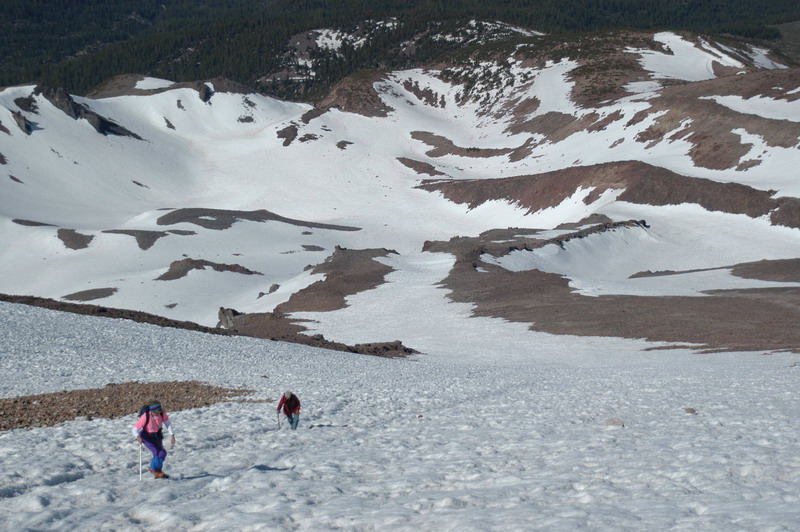 |
|
Resting at Horse Camp
|
Looking back
|
When Paul and my schedules eventually collided, I began escorting other friends or testing Shasta’s other flanks, often with more skilled climbers. An ascent from Clear Creek, an east side route, provided the most alpine-like vantages of Shasta. A hike to Hidden Valley opened up the west side and routes on and alongside Cascade Gulch. For about a decade we mostly climbed the north side, along variations of the Hotlum-Bolam route. In recent years we have shifted to the west side, over-nighting at Hidden Valley, which offers one of the most spectacular campsites on the mountain.
I love being on snow. After that first year we learned to climb early and, if snow was sparse, to search out snow-clogged gullies. Whether on Shasta or other Cascade peaks, there’s an eager calm that comes with strapping crampons over my boots, weaving my hand through my ice ax strap and stepping spider-like up steepening pitches.
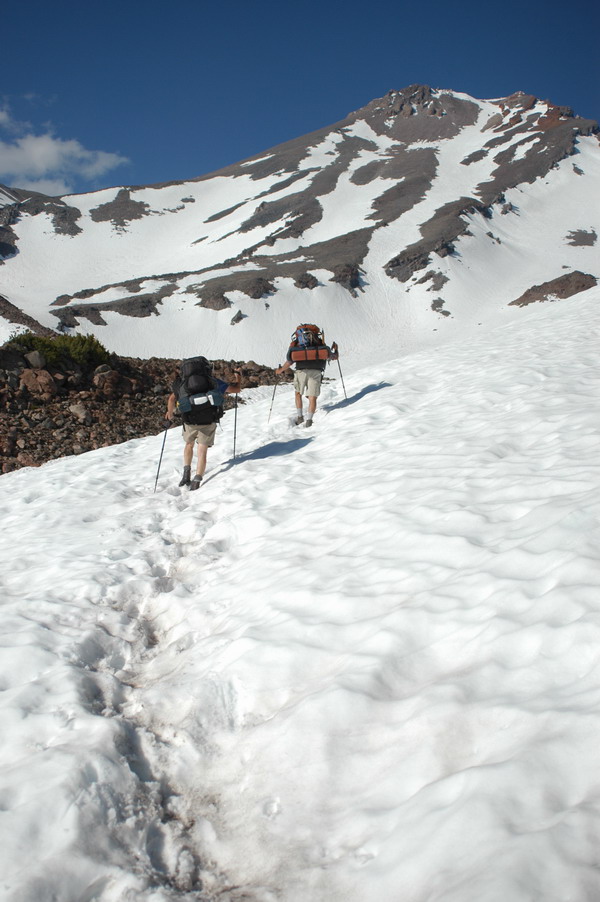 |
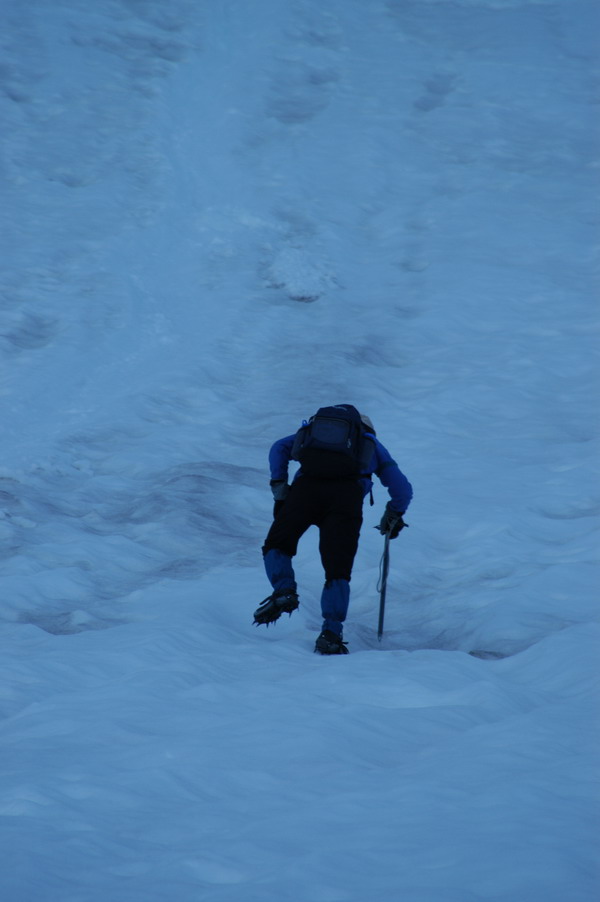 |
|
Up and up and up
|
Shadow climbing before sunrise
|
I thrive on the moods of all mountains, but especially Shasta. Sometimes I’ve sat on top, my climbing pants rolled up to my knees, my shirt stripped off soaking in the sun. And as many times I’ve been bundled in every available piece of clothing, with wind shells over thick wool gloves and my parka hood tightened over a wool hat.
One year we used crampons and ice axes to pick our way up an ice-slicked slide to the summit area, where we touched the top and, without pause, began edging our way back down. But the most frightening climb was one that ended within easy striking range of the summit, when two friends, a husband and wife, slipped on north side ice and slid like human bobsleds several thousand feet before jolting to a stop, he with a leg broken in two places, she with her face peppered with debris. It took hours to move him to a location where he was eventually lifted off the mountain by a helicopter to a nearby hospital.
 |
|
|
View from Happy Valley
|
Mostly the climbs are serene and sublime, a stroll along familiar terrain. On top I always give silent shouts to the people I love. And twice I’ve stood on top alongside one of the people I love most, my daughter, Molly. A photo of the two of us on the summit is among my most valued.
I’ve climbed with close friends like Tom Klump, who’s also often been joined by his daughters and sons, even years after they’re scattered around the West Coast. One melancholy climb Tom and I and friends carted up the ashes of Gene Howard, “Geno,” after his death from cancer. Geno used to climb Shasta several weekends each year. He figured he’d reach the top 70 or more times, but really wasn’t sure. When I once asked him how many times he’d reached the summit he smiled and answered, “It’s like asking how many times you’ve made love to your wife. You don’t count.”
 |
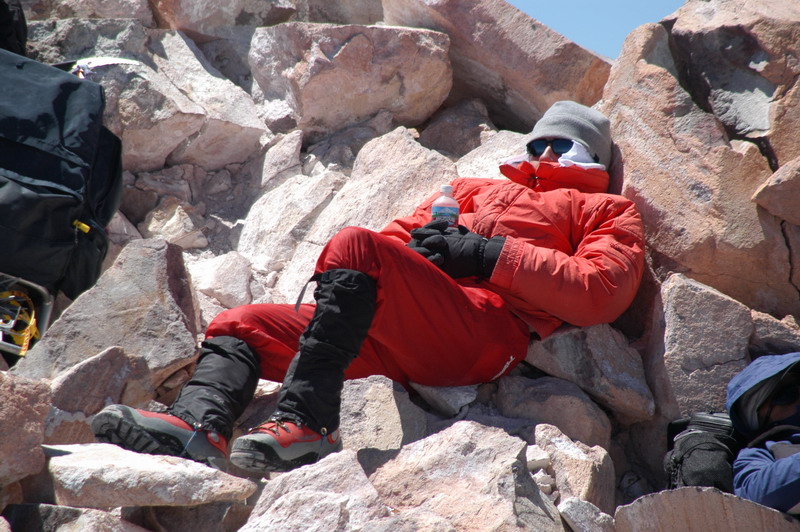 |
|
Snow slogging
|
A high elevation nap
|
That first year I’d expected that a single ascent would satiate my desires about Shasta, a mountain I see almost every day of the year from my front yard or while driving around the Klamath Basin. From viewpoints on the way to its summit I’m always fascinated at studying the shrinking far below terrain, in kicking back in sheltering rocks at the summit and viewing passing clouds, in thinking of the always unique but shared experience of climbing Shasta’s shanks with thousands of others, the Gene Howards and Tom Klumps and Paul Shipmans.
Shasta’s omnipresence makes it alluring, powerfully magnetic. I find fascination in its human and geologic history, in its mythologies and legends, in changing moods and self-created weather. Shasta is a magical mountain that, like a siren’s call, lures me and others back again and again. Climbing Shasta is being a part of it, a way of connecting me to the mountain and its mysteries. That’s why I savor remembrance and value the many stories of past climbs, but dread the day when my climbs are only memorie, As much as I remember friends and events from climbs in the past, I prefer looking forward to climbs to come.
* *
Lee Juillerat lives in Klamath Falls, Oregon, where he can see Shasta from his front yard. This story is adapted from a piece Juillerat wrote for the 2003 book, “Mount Shasta Reflections,” by Renee Casterline and Jane English. A long-time contributor to High On Adventure, he is the regional editor for the Klamath Falls Herald and News, freelance writer-photographer for a wide range of magazines and author of three books about Crater Lake National Park. He can be reached at lee337@cvc.net.
* *
Mount Shasta is located in far northern California near the town of Mt. Shasta, where climbing-outdoor shops, including the Fifth Season and House of Ski, rent necessary gear, including ice axes and crampons. The mountain is mostly climbed between June and September. Some prefer early season climbs to take advantage of hiking and climbing in snow. Three guide services are licensed to lead climbs. In the fall, routes can be dangerously icy, so always check ahead with personnel at the Shasta-Trinity National Forest’s Mt. Shasta Ranger District, 204 West Alma Street, Mount Shasta, CA 96067, (503) 926-4511, on the Web at www.shastavalance.org, and go to “So You Want to Climb Mount Shasta” link
Recommended reading include the “The Mt. Shasta Book: A
Guide to Hiking, Climbing, Skiing Exploring the Mountain and Surrounding Area,”
by Andy Selters and Michael Zanger, which is by far the best resource for climbers
and hikers. The most fascinating book about Shasta is the long out-of-print
“The Mt. Shasta Story,” by A.F. Eichorn Sr. For a look at Shasta’s
mythic history, read “Mt. Shasta: California’s Mystic Mountain,”
by Emilie A. Frank, including a story by Juillerat, “Acquainted With a
Shasta Night.”
* * *
.